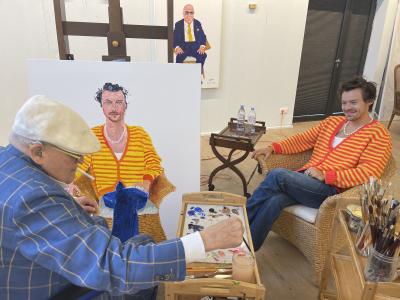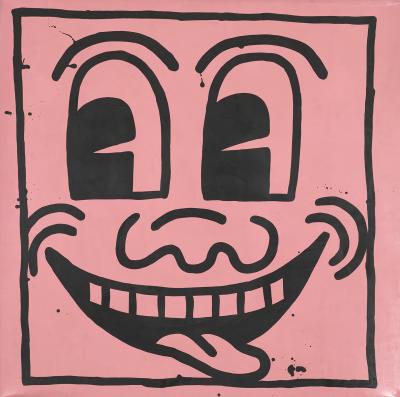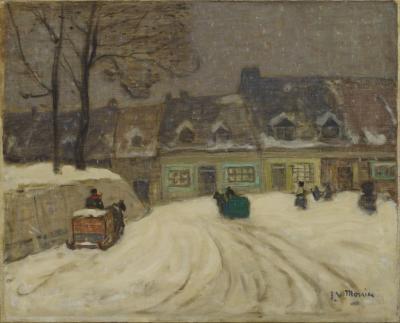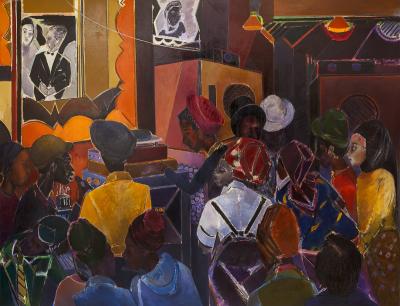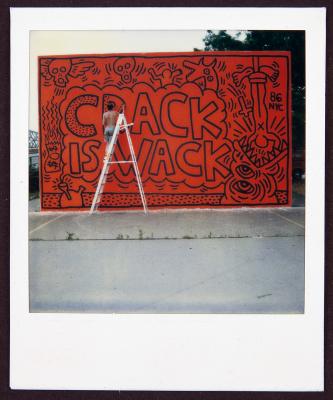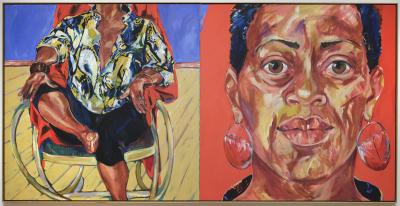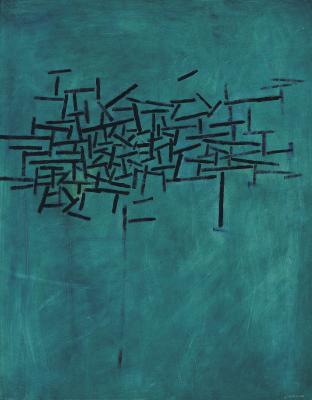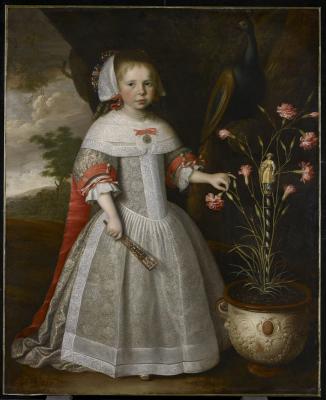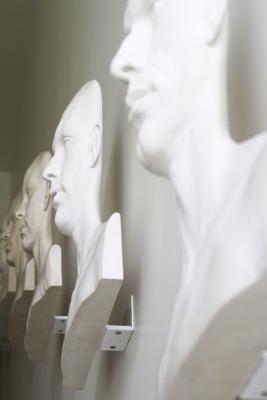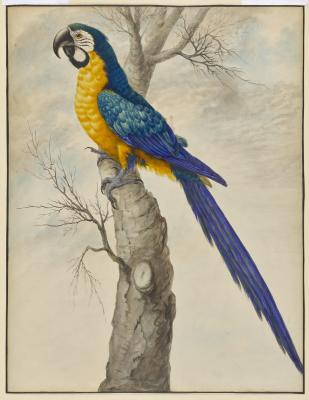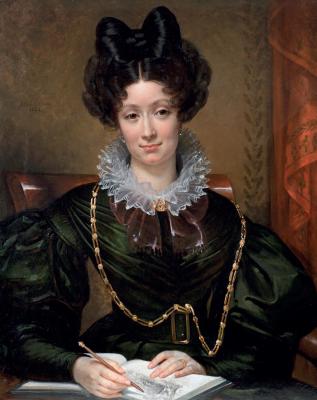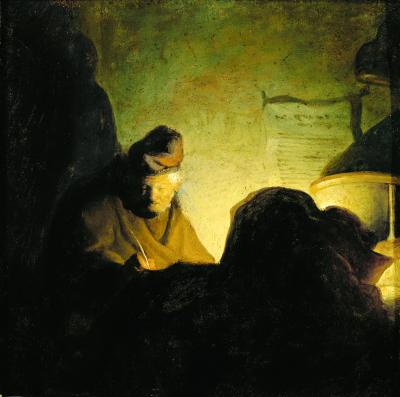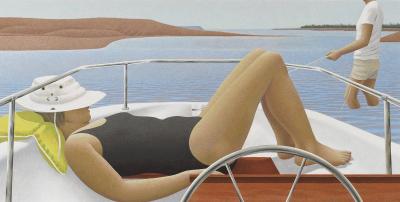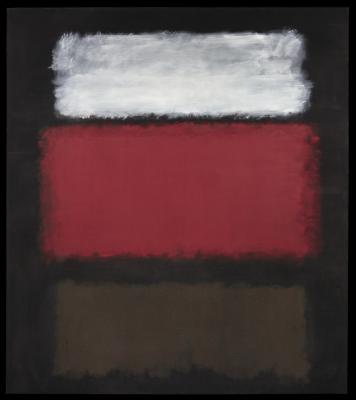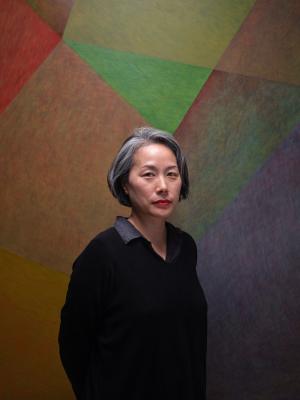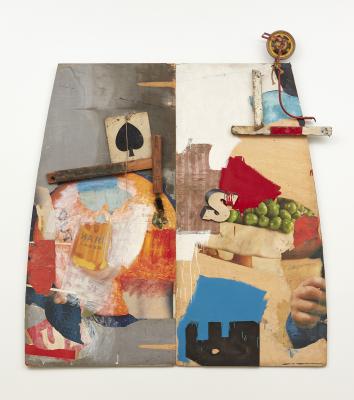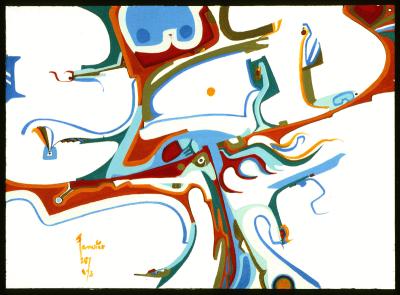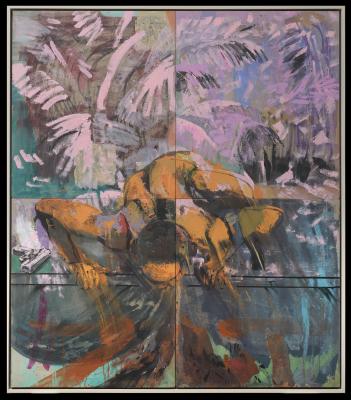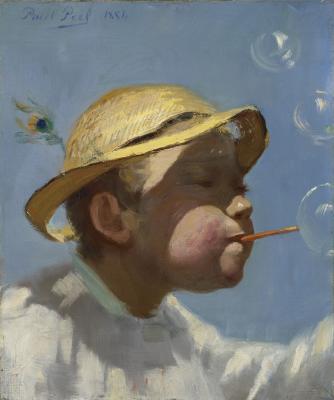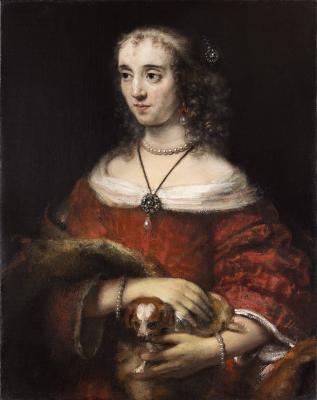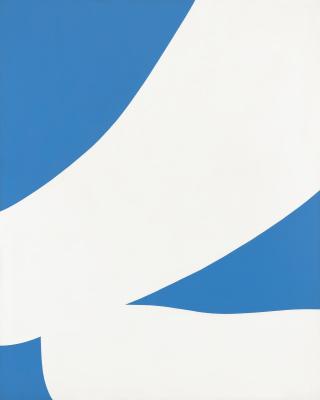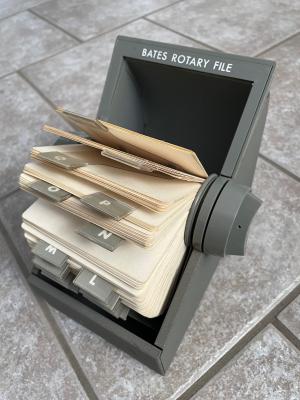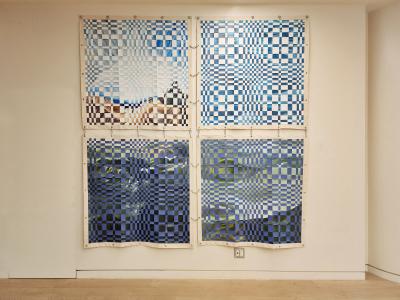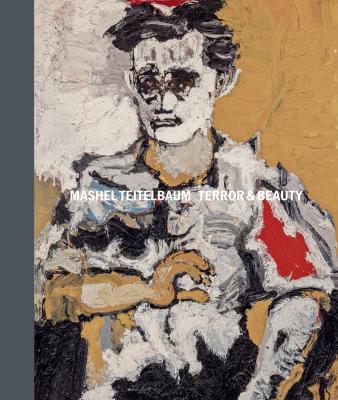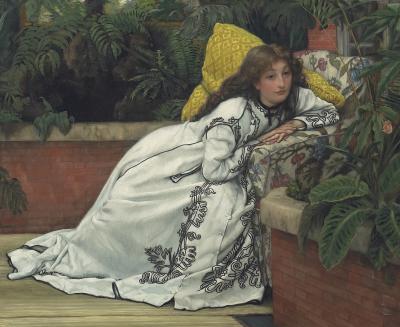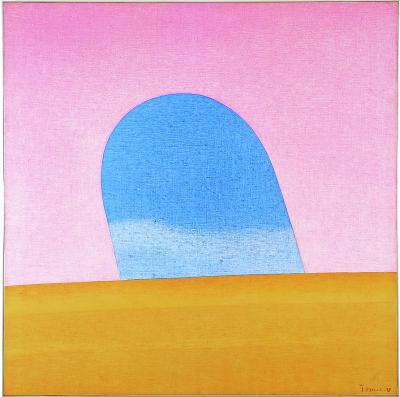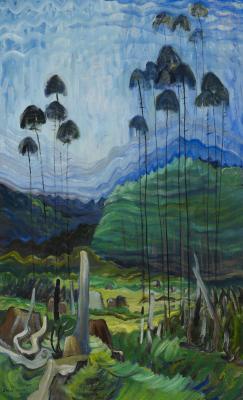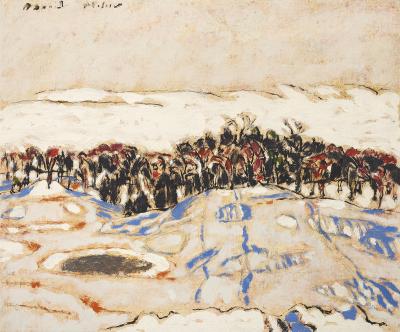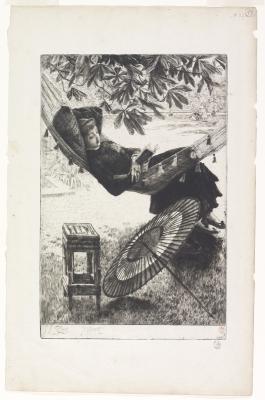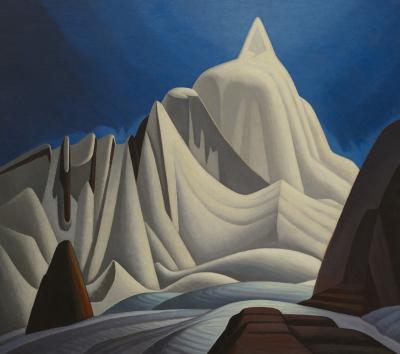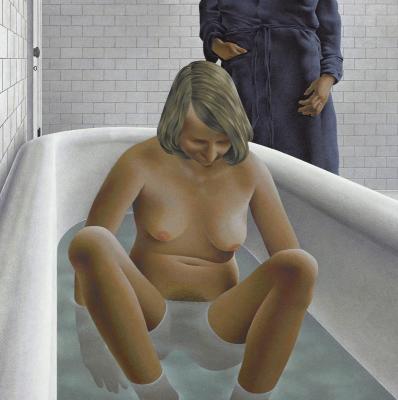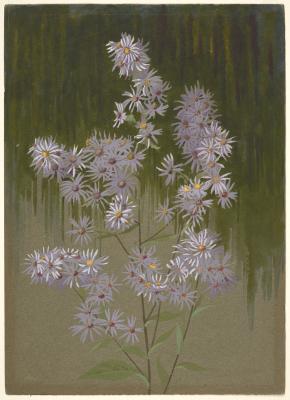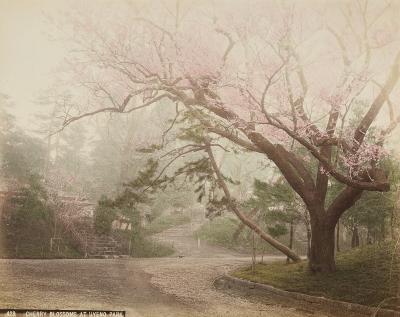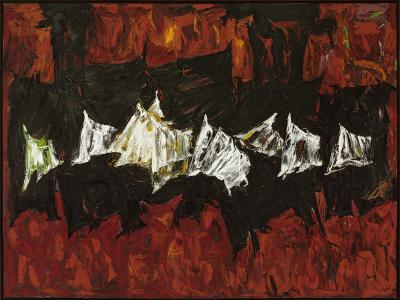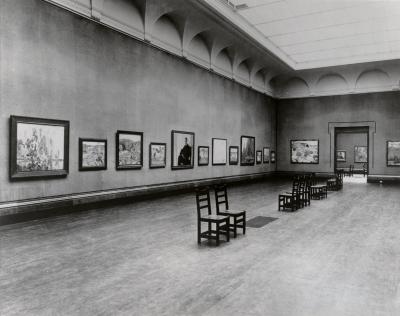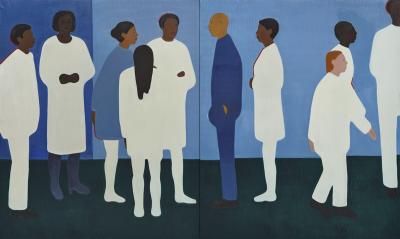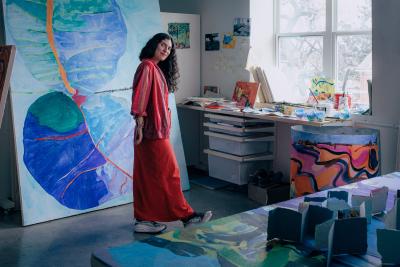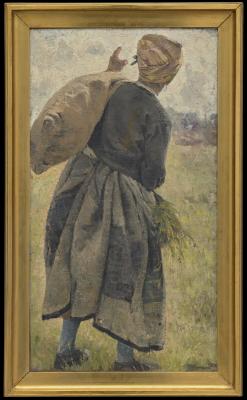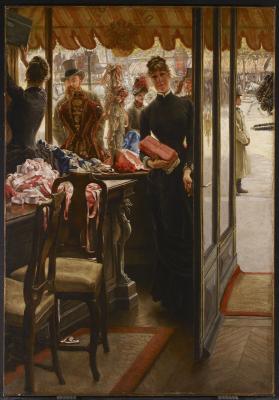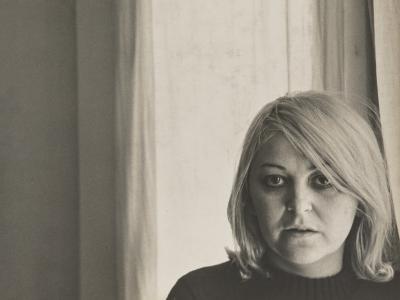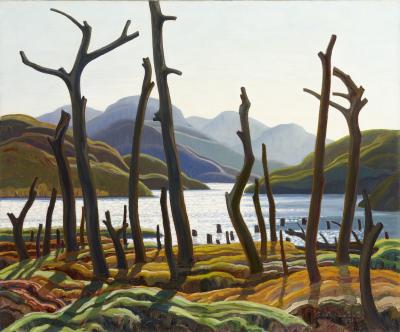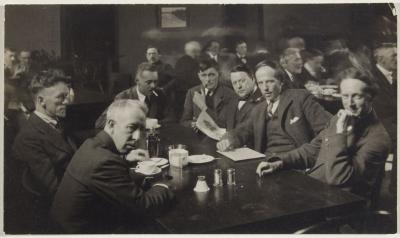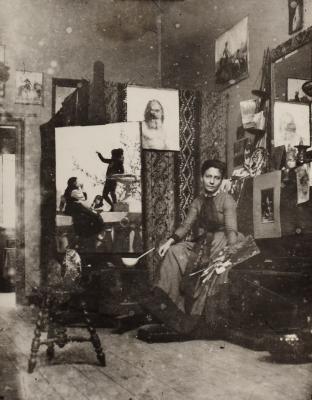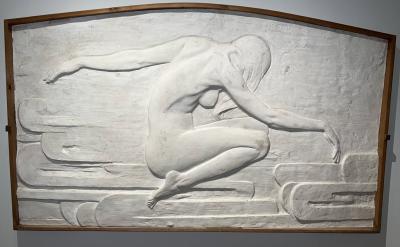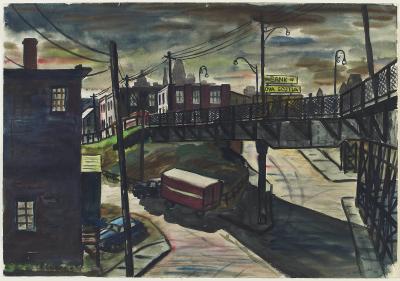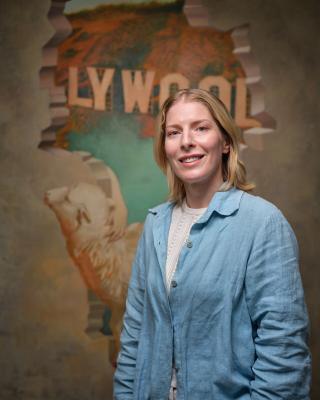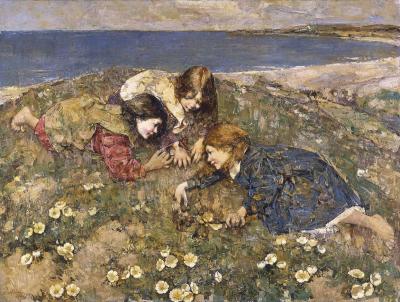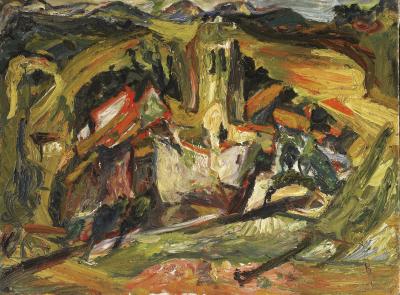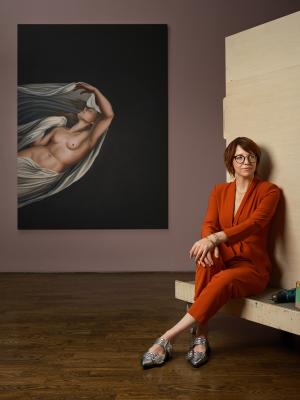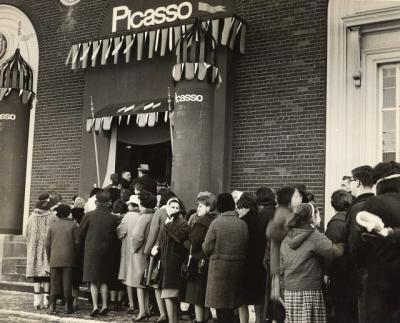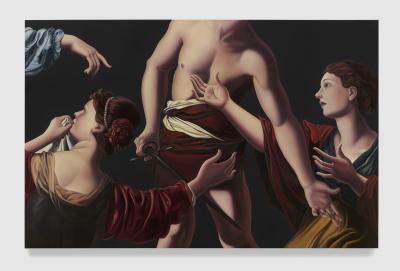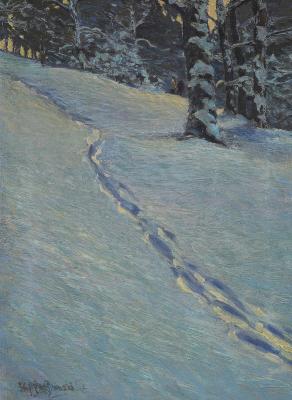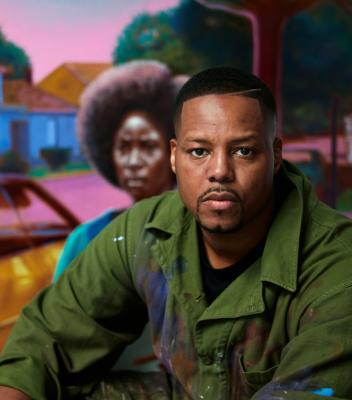Painting Momentum With Allison Katz
The winner of the 2023 Gershon Iskowitz Prize at the AGO discusses her works on view
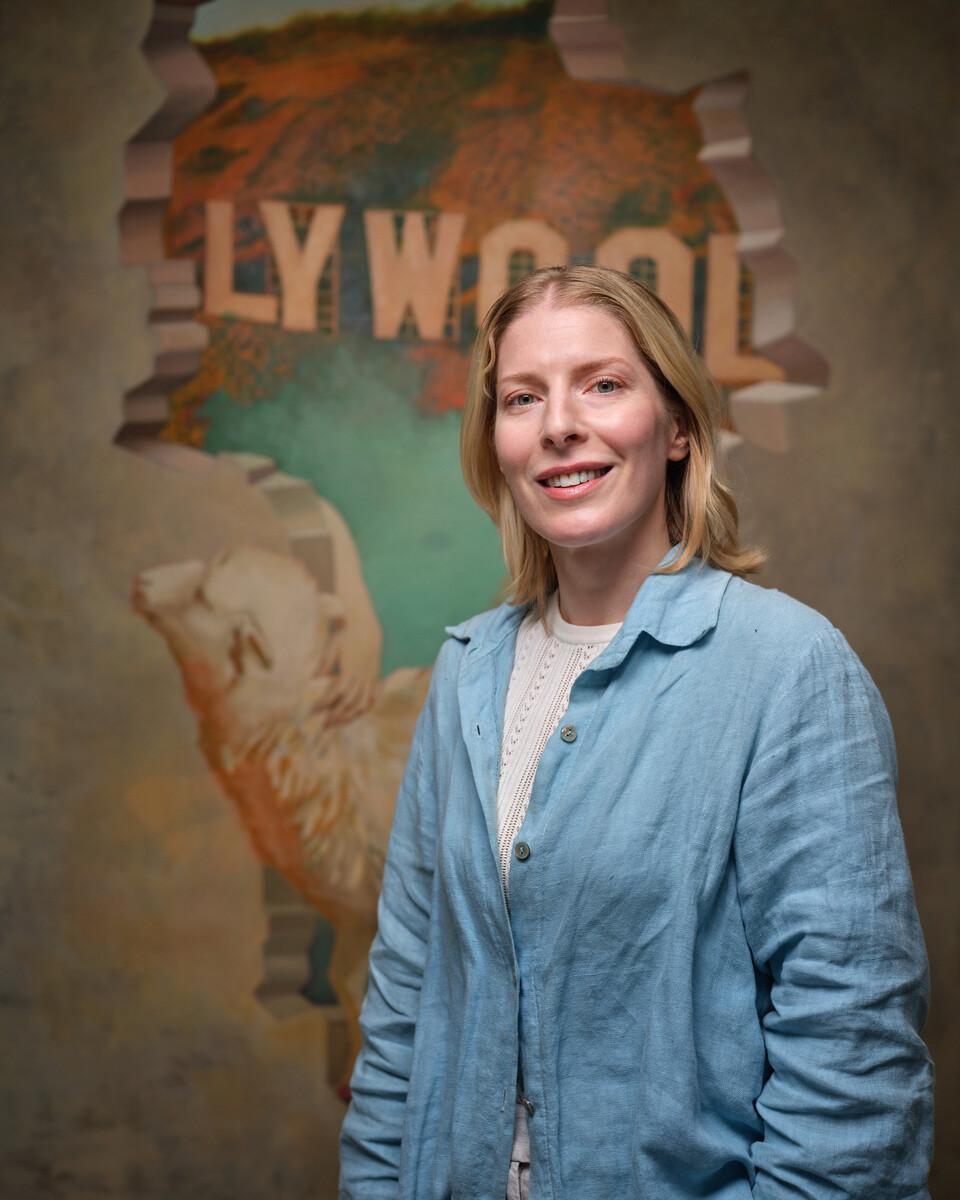
Allison Katz. Art Gallery of Ontario. Photo: Craig Boyko © AGO.
Bursting with energy, allusion, memory, and wit, Allison Katz’s paintings are a powerful reminder that paintings talk – responding to place, visual histories, and to each other. An encounter with Katz’s paintings is one of sensorial pleasure that encourages us to consider the limits and potential of painting itself.
A focused presentation of new and recent works on canvas, Inner Momentum marks Katz’s award of the 2023 Gershon Iskowitz Prize at the AGO. It aims to introduce visitors to her unique visual language. Located inside the exhibition Moments in Modernism at the AGO, Katz’s presentation opens with a clever nod to the modernist legacy that surrounds and informs much of her work.
“I’m interested,” she says, “in images that remind us that even the most representational or figurative image is also an abstraction.”
Foyer sat down with Katz to learn more about her love of painting, these works, her use of humour, and her fascination with the poster. The following has been edited for clarity.
Foyer: The exhibition opens with your words, “Painting is a conversation.” What kind of conversation are you hoping for?
Katz: I’m building a multi-pronged conversation: it’s between myself and my paintings as much as it is between my work and paintings other people have made. It’s between different time periods, different media. There’s even the conversation that starts happening between the paintings themselves, without me! There are all kinds of simultaneous conversations taking place. When I use the word conversation, I mean a back and forth, a question and a possible answer, a game of call and response. It’s an ongoing dialogue full of chance, synchronicity, and surprise.
The paintings on view are rife with autobiographical references. Is that the inner momentum alluded to in the title?
Autobiography is definitely one energetic system that I wanted to allude to, the way in which images are generated from one’s inner life as it collides with external forces. When it came to choosing a title for this presentation, I also wanted to signal literally, and playfully, that my works are inside an exhibition entitled Moments in Modernism. It’s a nod to the fact that painting traditions can shift and move over time. The title also reflects my interest in the contradictions inherent to painting, such as the desire to capture movement in a still image.
The first work visitors encounter, poised on a free-standing wall, is Truth (2023). This beautiful portrait, taken from a photo, features your grandmother Ruth, looking at Alberto Giacometti’s 1960 sculpture Walking Man in the courtyard of a French museum. What do you want us to know about her?
I want people to know that she taught me how considered, thoughtful looking is a talent and an important skill. She taught me early on how to look at art, how to look at the world with openness, and that honing your gaze is a tool that can lead to a very interesting life. This painting is a homage, and it's also a way of reflecting on the act of painting as a process of looking.
You are interested in the flatness of the canvas and yet there's also a lot of beautiful sculptural elements in your work - the grains of rice in Between the cock and the bed, the impasto modeling on Truth. What do these 3D elements achieve?
Painting is very seductive – it’s capable of producing captivating illusion. Paintings are window space; a thing you can get lost inside of and lose track of time and place. And yet, it all comes from organic pigments and chemical dyes, oil and water. I think it is vital to entertain a certain amount of doubt, to force a reflection on how painting is different from other surfaces. When I add texture, it’s my way of productively engaging my doubt. I don't want to get completely swept away in my belief in the image. I want there to be this other layer of awareness and realism. The rice, for example, is going to be more real than any image I'm painting. It adds an element of surprise capable of slowing the viewer down, which is a thing that other forms, like screens, cannot accomplish so easily. Someone might think they have seen the painting in reproduction, and then they see it in the flesh, and they encounter a whole other world happening on the surface. The experience of a painting cannot be reproduced in a photograph, so I embed the surface with that truth.
Making its debut at the AGO is the icy blue painting Thaw (2025). What prompted you to make this work and did anything surprise you while making it?
When I first started speaking with Debbie Johnsen, the AGO’s Assistant Curator of Contemporary Art, I asked her to tell me about influential exhibitions in the history of the AGO. One of these, The European Iceberg from 1985, curated by the legendary Italian curator Germano Celant is particularly important, as it created interest in contemporary Italian and German painters in Canada and led to major acquisitions of work by artists such as Gerhard Richter. That exhibition was very influential to me. The graphic design of the catalogue even inspired my poster – and it led me to think about the metaphor and image of the iceberg from a new perspective.
Specifically, about how I could suddenly see the surface of a painting as the proverbial “tip of the iceberg,” meaning there is something hidden beneath its surface. A good painting should spark the sense of something left inaccessible, not visible.
Plus, icebergs have always been threatening - think of the Titanic -and even now, as they melt, they are harbingers of global warming. I was trying to broaden and reframe melting as an act of release or surrender, a loosening. That imagery led me to think about Thaw as an experiment in orientation, a slippage of position. I didn’t necessarily plan it, but I rotated it around on all four sides as I was painting it, and when I got into the exhibition space, I suddenly felt that we should also show it that way, as the painting looks completely different as it moves around. Different details emerge and the composition keeps surprising me. We’ve installed it one way, but it will physically rotate every ninety degrees throughout the presentation’s duration, ultimately completing a 360-degree turn. It’s another play on the idea of “momentum.”
Was there ever a time when you weren't painting? Why have posters become an integral part to your practice?
I've always painted, and all the other mediums that I work in come out of a painting sensibility. I have always been drawn to the magic of creating a world out of a blank page or canvas. Anyhow, it’s a trick – nothing is truly blank. We are always contending with something, beginning with the unconscious. It’s that sense of being enmeshed and connected to so many layers of aliveness that I love.
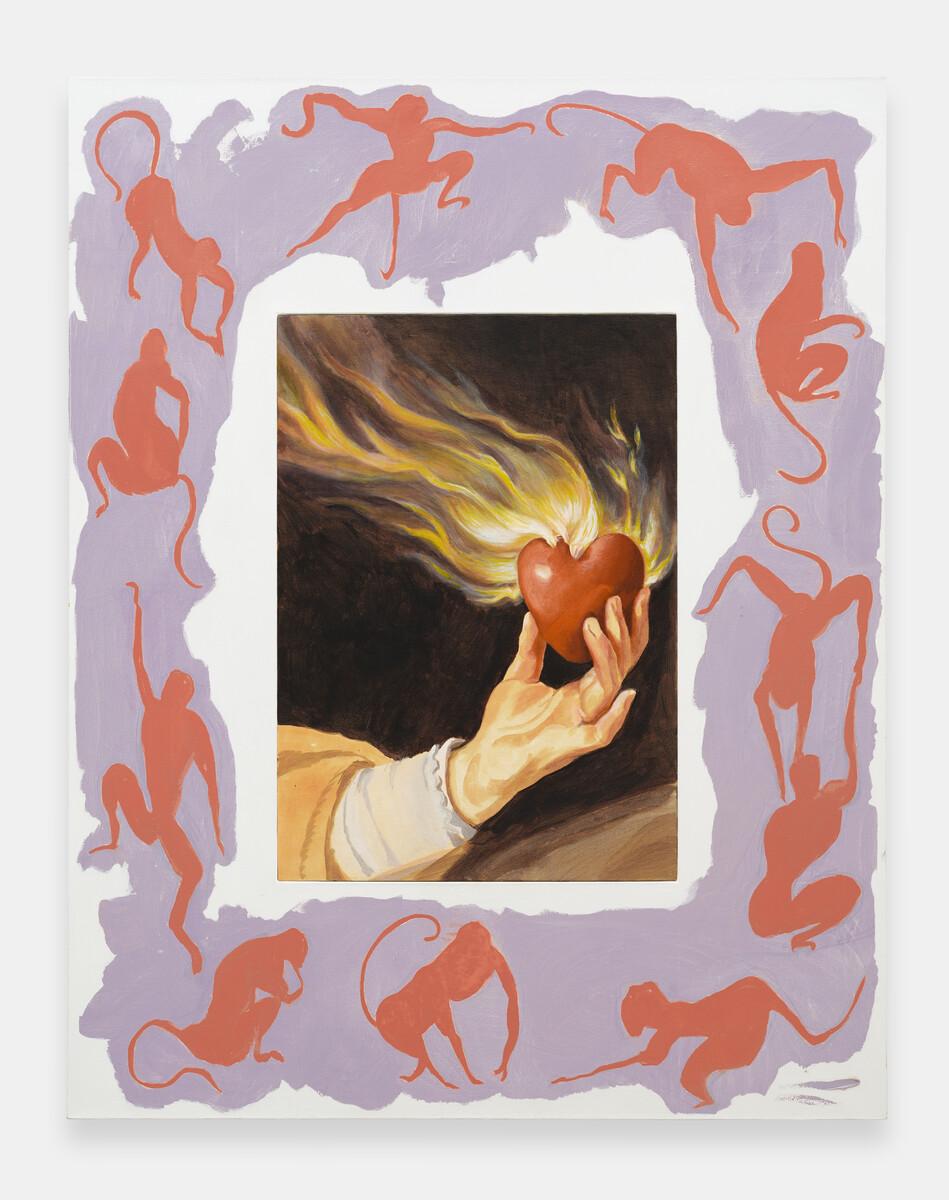
Allison Katz, Blondie, 2013-2021. Oil and acrylic on linen, 180 x 140 cm. Courtesy of the artist. © Allison Katz. Photo: Eva Herzog
Posters have always been a form that attracted me because they signal an event, a happening, a performance. They were a large part of my formative years in Montreal in the early aughts; artists I admired used to paint elaborate posters for poetry readings and concerts that were artworks in themselves, even though they were photocopied and plastered throughout the city. I experience looking at a painting as a live event, and I want to communicate that energy. Paintings are often thought of as timeless, but exhibitions are very much bound in time; a poster can register that contradiction. Plus, I have lots of surplus ideas when I'm painting. I find that Photoshop and other digital programs provide an alternative way to capture these graphic ideas, freeing me from having to force them onto the canvas… and accidentally giving me the seeds for future paintings.
Allison Katz: Inner Momentum is organized by the AGO in partnership with the Gershon Iskowitz Foundation, and is on view now in the Rosamond Ivey Gallery on Level 4, adjacent to Moments in Modernism. Purchase the poster Allison Katz: Inner Momentum at Shop AGO.

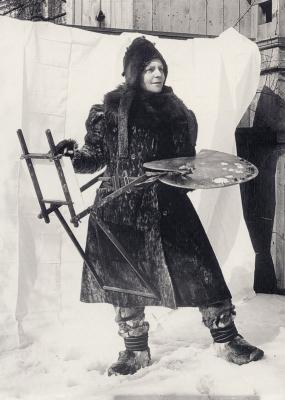
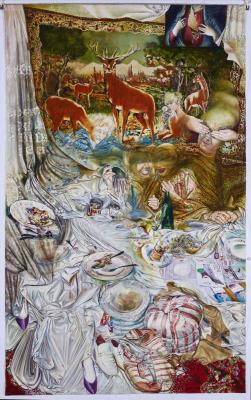
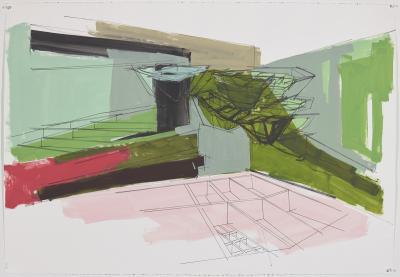
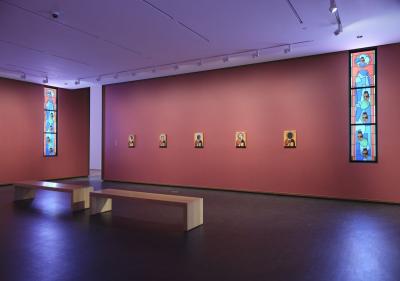
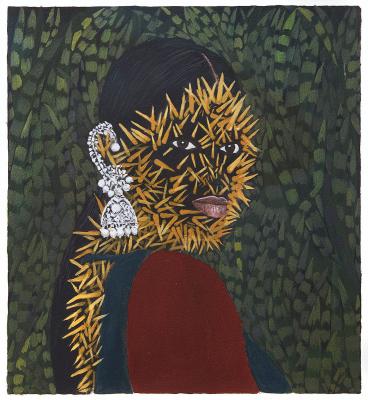
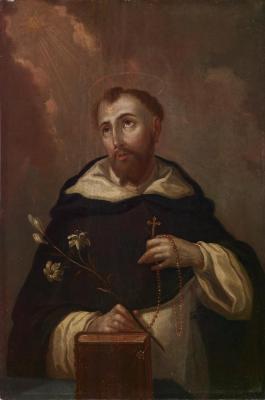
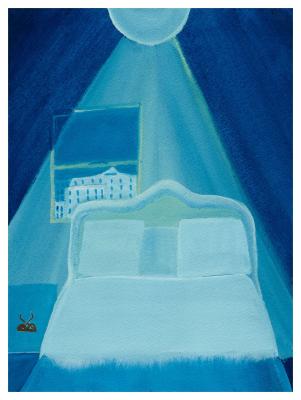
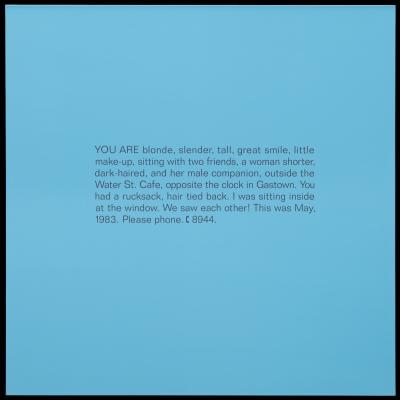
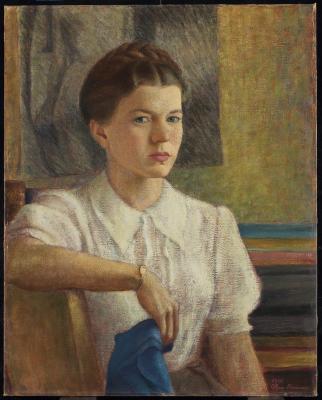
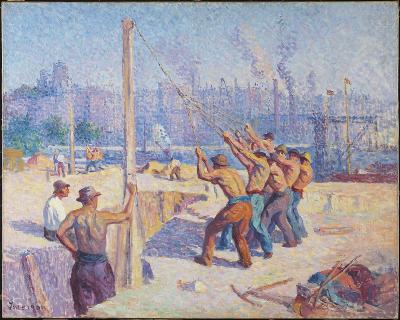
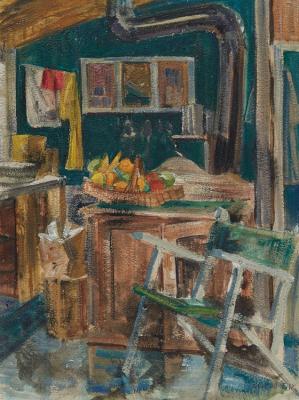
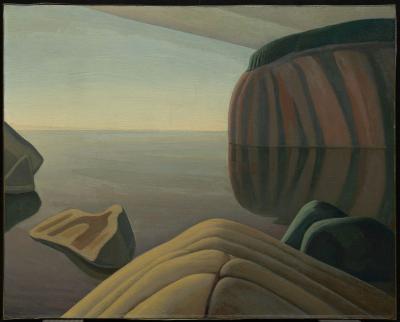
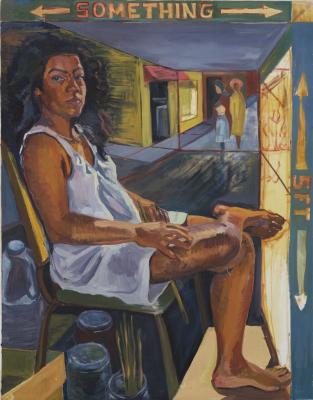
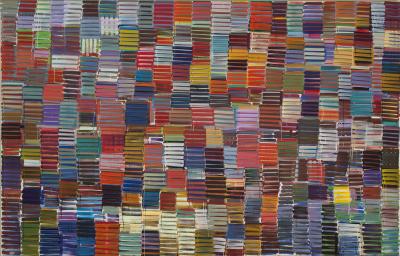

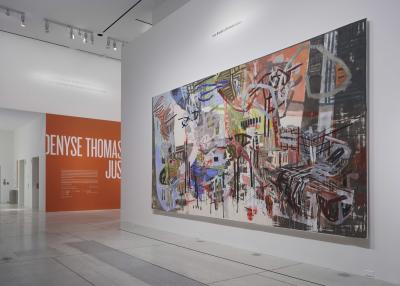

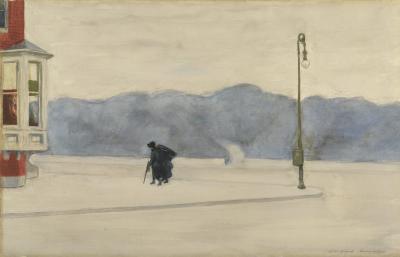
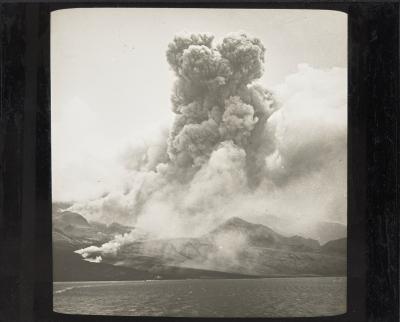
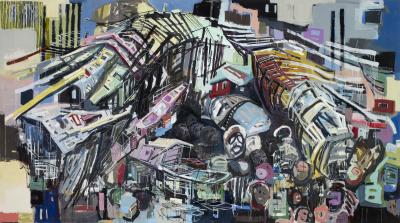
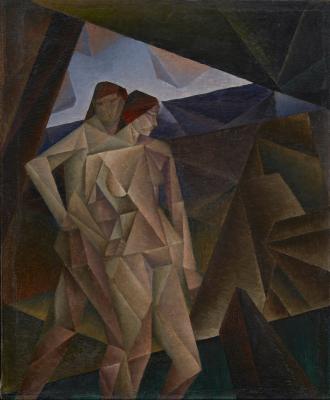
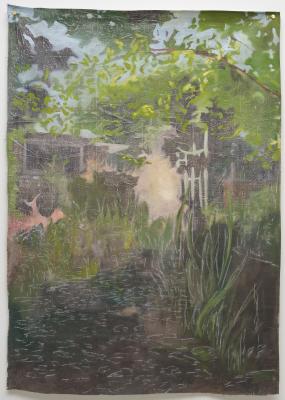
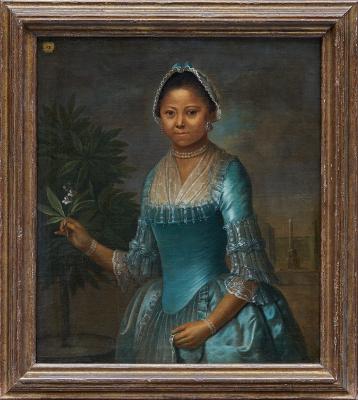



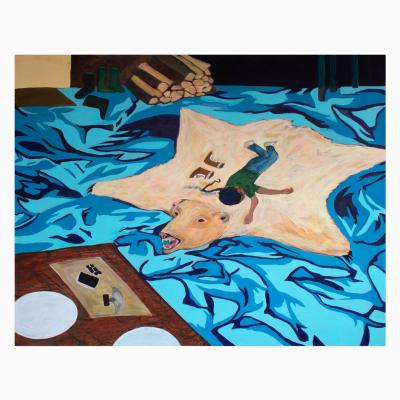
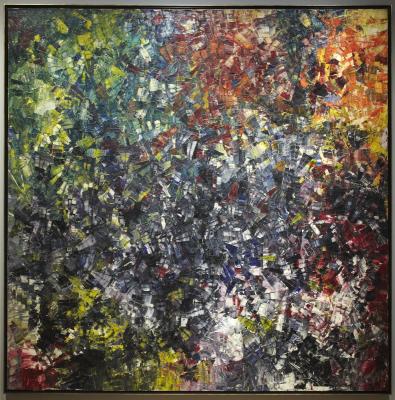
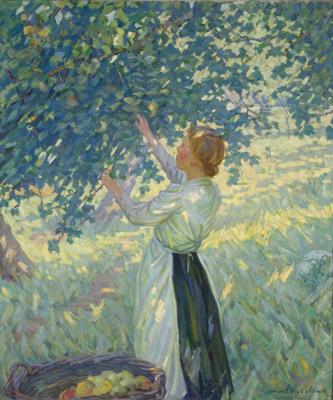
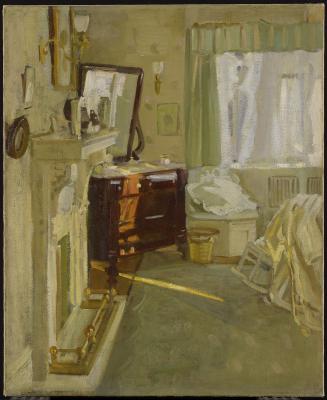
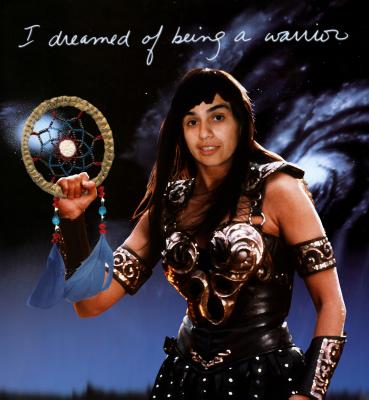
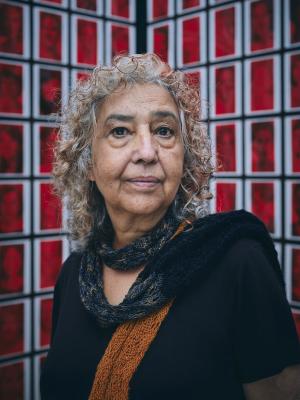

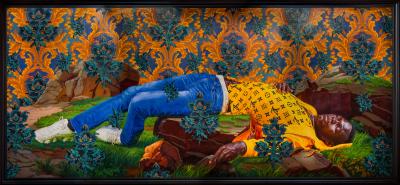
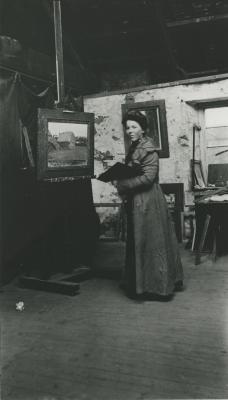
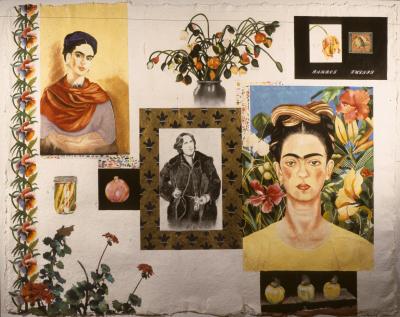
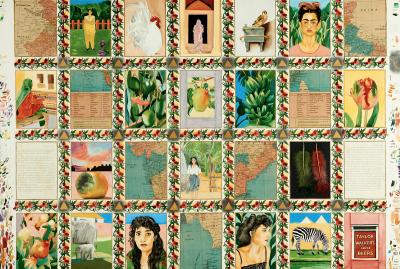
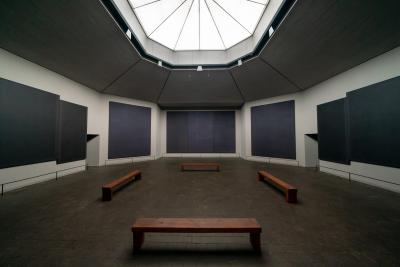
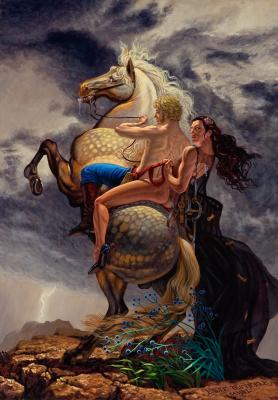
![Keith Haring in a Top Hat [Self-Portrait], (1989)](/sites/default/files/styles/image_small/public/2023-11/KHA-1626_representation_19435_original-Web%20and%20Standard%20PowerPoint.jpg?itok=MJgd2FZP)
